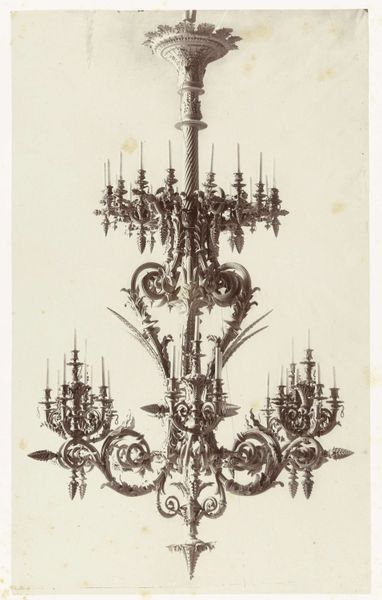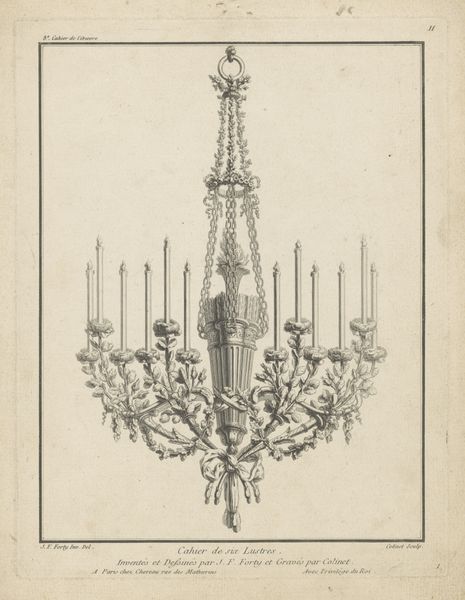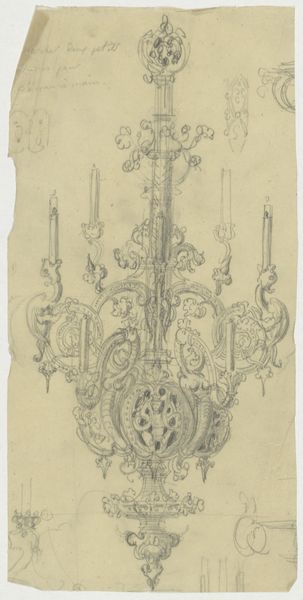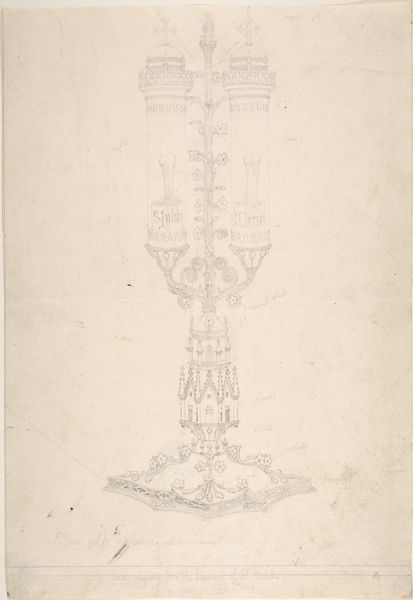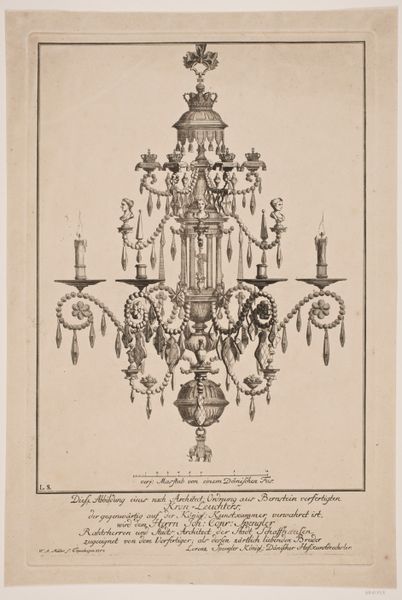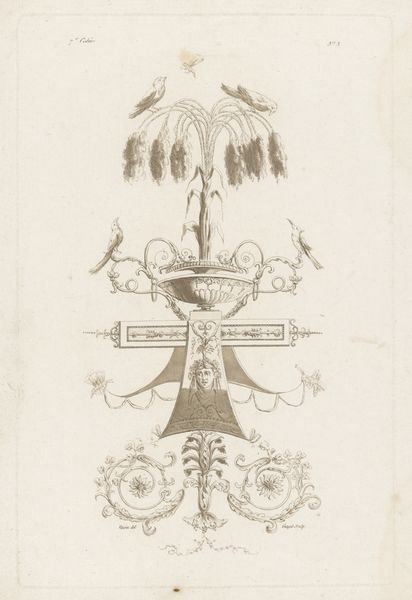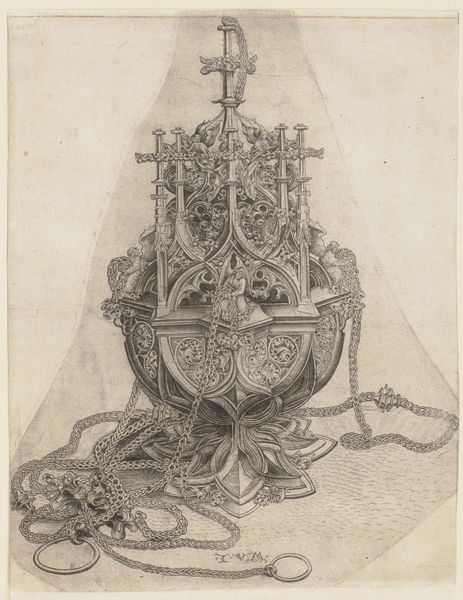
drawing, paper, watercolor, ink
#
drawing
#
neoclacissism
#
paper
#
watercolor
#
ink
#
pen work
#
sketchbook drawing
#
watercolour illustration
#
decorative-art
Dimensions: height 256 mm, width 198 mm
Copyright: Rijks Museum: Open Domain
Curator: Here we have Jean Démosthène Dugourc’s “Design for a Chandelier,” dating to 1784, executed in ink and watercolor on paper. Editor: It strikes me as both ethereal and burdened – all that delicate line work weighed down by cherubic figures straining under the implied weight of... well, light. It feels baroque trying to be Neoclassical. Curator: An interesting tension indeed! The piece displays classic Neoclassical symmetry and order in its overall form, and it relies on symbolic cues referencing classical antiquity, seen in the cherubs. Yet, there’s a clear exuberance defying strict Neoclassical tenets. Notice how the intricate details disrupt a purely austere reading? Editor: The cherubs feel forced. They lack that genuine Renaissance lightness. Instead, they are purely decorative, little muscles bulging without purpose as they clutch their candle platforms. It gives an almost cartoonish air to the drawing. Curator: Perhaps that's Dugourc injecting a playful sensibility! Consider how the delicate watercolor washes contrast with the precise pen work. The pastel hues of blues and greens give a sense of calm while the dark pen lines create the scaffolding for ornamentation. Editor: Scaffolding is right! This chandelier looks less about illumination and more about the elaborate dance of societal performance. Imagining it in place feels oppressive. Is beauty really worth back strain and dripping wax? Curator: Such tensions capture the transitional spirit of the era, where decorative extravagance still had a hold alongside a rising emphasis on rational simplicity. Dugourc, here, delivers a functional object and critique through line, form and color. Editor: I see your point. It’s a pre-revolution commentary wrapped up in chandelier-form. Not just decoration, but perhaps also a statement about artifice itself. Curator: Precisely. Thank you for lending such a refreshing angle to the design, I appreciate your insight. Editor: The pleasure was all mine! Thinking about art aloud always helps me see something new, even in something as seemingly simple as a lighting fixture.
Comments
rijksmuseum about 2 years ago
⋮
Dugurc designed this chandelier for Grand Duke Paul of Russia, later Tsar Paul i. The blue parts were intended to be executed in Sèvres porcelain, the yellow ones in gilt bronze, and the drops were to be of rock-crystal. This grandiose object, which was to have a height of approximately 150 cm, was never executed.
Join the conversation
Join millions of artists and users on Artera today and experience the ultimate creative platform.
